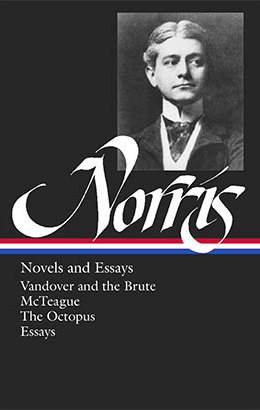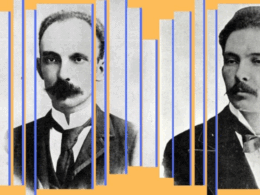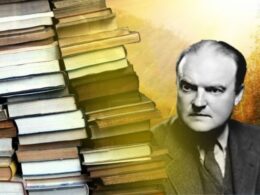Guest blog post by Richard White, Margaret Byrne Professor of American History at Stanford University and author of Railroaded: The Transcontinentals and the Making of Modern America
| Read The Octopus |
 |
| in Frank Norris: Novels and Essays |
Frank Norris understood railroads. His 1901 novel The Octopus dramatized the conflicts between California ranchers and wheat growers on the one side and the railroad and its political machine on the other. He modeled his fictional Pacific and Southwest Railroad after the Southern Pacific, and he got the details right. In my recent book, Railroaded: The Transcontinentals and the Making of Modern America, I quoted Norris when I needed a pithy and quite accurate account of how railroads set rates and why people hated them for it. And I also used Norris’s description of one of his central characters, S. Behrman, to encapsulate everything the Southern Pacific Railroad could, and did, do.
If the freight rates are to be adjusted to squeeze us a little harder, it is S. Behrman who regulates what we can stand. If there’s a judge to be bought, it is S. Behrman who does the bargaining. If there is a jury to be bribed, it is S. Behrman who handles the money. If there is an election to be jobbed, it is S. Behrman who manipulates it. It’s Behrman here and Behrman there.
S. Behrman was a fiction, but he was also a composite of men who were real enough: W.H. Mills, Creed Haymond, W.W. Stow, Boss Billy Carr and others who looked after Southern Pacific interests in California during the 1880s and 1890s. Norris knew California and the Southern Pacific. Behrman did what actual railroad operatives did.
But for all his grasp of the details that made his fictional railroad plausible, Norris was less interested in how railroad corporations worked than what they meant. He was intent on making a larger point about the nature of American society in the late nineteenth-century and about American modernity. The Octopus was the literary apotheosis of the power, ruthlessness, and efficiency of the modern corporation. The novel leaped from the mechanical power of the locomotive to the soulless power of the corporation:
. . . the galloping monster, the terror of steel and steam, with its single eye, Cyclopean, red shooting from horizon to horizon . . . symbol of a vast power, huge, terrible, flinging the echo of its thunder over all the reaches of the valley, leaving blood and destruction in its path; the leviathan, with tentacles of steel clutching into the soil, the soulless Force, the iron-hearted Power, the monster, the Colossus, the Octopus.
Norris modeled the railroad’s president Shelgrim after Collis P. Huntington. Shelgrim was “a giant,” a man with “an ogre’s vitality,” who had “sucked the life-blood from an entire people.” He was a man who could destroy entire states and yet know in detail, and sympathize with, the travails of a bookkeeper. He insisted that he only rode and did not control the railroad. It was a creature of “[f]orces, conditions, laws of supply and demand,” the equivalent of nature itself.
For all its impressive detail, The Octopus is a novel and Norris’s corporation was a fiction. Behrman did what Southern Pacific operatives did, but he was far more competent. Looking for Behrman’s equivalent in the railroad’s archives is like looking for Superman and finding only Clark Kent. The agents of the Southern Pacific were not only fallible, they were often bumbling. Spend time in Collis P. Huntington’s correspondence and Norris’s account of omnipotent powers and forces is laughable. Huntington and his Associates were not giants; their railroads were not forces of nature.
The actual Octopus was a sadly conflicted monster. Those tentacles of steel were as likely to be slapping at each other or poking into the monster’s own cyclopean eye as securing prey; the soulless force of the corporation actually amounted to a group of divided, quarrelsome, petulant, arrogant, and often astonishingly inept men. With the possible exception of the Canadian Pacific, this was true of all of the transcontinentals—and of most western railroads. There was an Octopus, but it was usually less fearful than funny and fantastic. It was more like watching a group of fat men in an Octopus suit.



